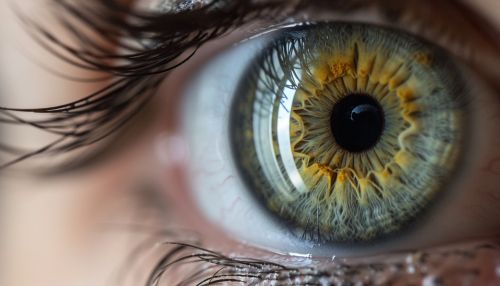Iconic memory
Overview
Iconic memory is a type of sensory memory that briefly retains a visual representation of a scene. It is a component of the visual memory system which also includes visual short-term memory and long-term memory. Iconic memory is described as a very brief (<1 second), pre-categorical, high capacity memory store.


Characteristics
Iconic memory is characterized by its high capacity, rapid decay, and pre-categorical nature. It is capable of holding a large amount of information, but this information is not held for long. The duration of iconic memory has been measured to be between 100 milliseconds to one second. This rapid decay suggests that iconic memory has a primarily perceptual function, serving to bridge the gap between visual perception and the slower processes of attention and recognition.
Function
The primary function of iconic memory is to provide continuity of perception during saccades, the rapid eye movements that occur several times per second. During a saccade, the visual system is effectively blind, but we do not perceive the world as a series of disjointed snapshots because iconic memory holds a representation of the pre-saccadic scene that can be compared with the post-saccadic scene.
History
The concept of iconic memory was first introduced by George A. Sperling in the 1960s. Sperling conducted a series of experiments to investigate the capacity and duration of sensory memory. His findings provided evidence for the existence of a brief visual memory store, which he termed "iconic memory".
Experimental Evidence
Sperling's experiments involved flashing a grid of letters for a very brief period of time and then asking participants to recall as many letters as they could. Participants were typically able to recall four or five letters from the grid, suggesting a high capacity for iconic memory. However, when Sperling introduced a delay between the presentation of the grid and the recall task, participants' recall performance dropped dramatically, indicating a rapid decay of iconic memory.
Current Research
Current research on iconic memory focuses on its role in visual perception and attention. Some researchers are investigating the neural mechanisms underlying iconic memory, using techniques such as electroencephalography (EEG) and functional magnetic resonance imaging (fMRI). Others are exploring the relationship between iconic memory and other types of memory, such as working memory and long-term memory.
